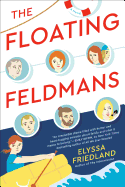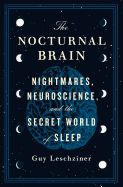
| Publisher: | Scribner | |
| Genre: | Friendship, Family Life, General, Literary, Fiction | |
| ISBN: | 9781982122737 | |
| Pub Date: | July 2019 | |
| Price: | $25 |
| Starred | Fiction |
by David Szalay
English writer David Szalay first showed his penchant for the linked-story novel in his Booker shortlisted All That Man Is in 2016. Originally written as a BBC radio drama, Szalay's novel Turbulence takes up this form once again to explore travel as the means by which various lives intersect in an increasingly globalized world. Structured like a relay, Turbulence traces the lives of one character to the next, switching perspectives after two lives have intersected. These intersections are both minor and major: the perspective jumps from an author to a woman she briefly meets in a grocery store, while in another case, the perspective jumps from brother to brother. What ties these stories together, 12 of them in total, is that they all begin or end at an airport. Through this concept, Turbulence shows the ways in which these major thoroughfares act as spaces where any and all worlds may converge, often in profound ways.
Through characters who are diverse in national identity, religion, socio-economic status, background and circumstance, Szalay is able to evoke a range of emotions perhaps unavailable to a more traditionally organized novel. The contrasting perspectives of Szalay's characters are what make this novel conceptually impressive, but it is the individual characters who animate the novel from page to page. Because the time with each character is so brief, readers are transported directly into the midst of some of their greatest crises, allowing access to an intimate connection it might otherwise take several hundred pages to build. Written in clear and penetrating prose, Szalay's Turbulence is a refreshing and empathetic take on the cosmopolitan novel. --Emma Levy, publishing assistant, Shelf Awareness

| Publisher: | Atria | |
| Genre: | Women, Friendship, Humorous, General, Fiction | |
| ISBN: | 9781982111335 | |
| Pub Date: | July 2019 | |
| Price: | $26 |
| Fiction |
by Katherine Collette
When Germaine Johnson loses her job as a senior mathematician at an insurance company, the 30-year-old Australian numbers wiz and sudoku aficionado's life is upended. Data points, algorithms and variables are how Germaine--with a very high opinion of herself and her abilities--navigates the world. She may be mathematically brilliant, but her social skills are dismal. This makes her virtually unemployable, until her cousin Kimberly offers a lead on a job at a council office in the city of Deepdene. The facility manages the senior citizens helpline, a phone-in service for older residents who need advice, or are lonely and need someone to talk to.
Perceptive, painfully exacting and over-achieving, Germaine soon catches the attention of Deepdene's mayor, who asks her to deal with a parking problem plaguing the senior center and an adjacent golf club. The task brings Germaine in contact with Don Thomas, who owns the club. She instantly recognizes good-looking Don as Alan Cosgrove, the 2006 national sudoku champion. Alan was once a very positive influence--from afar--in Germaine's life. "Sort of like the father I never had," admits Germaine, who is instantly starstruck and smitten. But why has Alan changed his name? Why is he managing a golf club? And is there really a parking problem, or is something else actually going on in town?
These questions form the basis of The Helpline, a moving and often madcap journey through the realities of everyday life, local politics and power plays. Debut Australian novelist Katherine Collette delivers a hilarious story that is sure to charm readers. --Kathleen Gerard, blogger at Reading Between the Lines

| Publisher: | Berkley | |
| Genre: | Women, Family Life, Humorous, General, Fiction | |
| ISBN: | 9780399586897 | |
| Pub Date: | July 2019 | |
| Price: | $16 |
| Fiction |
by Elyssa Friedland
Annette Feldman is turning 70, and she's determined to have the perfect family vacation to celebrate. But forcing her family onto a cruise ship for a week has unforeseen results. Annette's daughter, Elise, is hiding a shopping addiction while worrying over her two teenage children and her impending empty nest. Elise's journalist husband is making a major career shift, but he hasn't told Elise yet. Their father is hiding a secret of his own. And Freddy, Elise's brother, is proud of the career he's built, but worried his family won't approve. Elyssa Friedland (The Intermission) steers the whole clan through untested waters--often to hilarious effect--in her third novel, The Floating Feldmans.
Friedland's third-person narration shifts frequently between her characters, dwelling most often on matriarch Annette and straight-arrow daughter Elise. This approach allows Friedland to share background on vital family secrets, while keeping the cruise narrative sailing along. Her characters are true to type, but layered enough to (mostly) avoid caricature. Cruise director Julian provides occasional fresh, if sometimes biting, commentary on the Feldmans in particular and cruise-going families in general. But all of the Feldmans, and even Julian, are in for some surprises: not only the free fro-yo and the family trivia competition, but unexpected revelations and difficult truths. By the end of the week, it's anyone's guess whether the Feldmans will sink or swim--but it's a pretty sure bet they'll do it together. The Floating Feldmans is a fast, funny, surprisingly heartwarming ride on the high seas. --Katie Noah Gibson, blogger at Cakes, Tea and Dreams

| Publisher: | Mulholland Books | |
| Genre: | Psychological, Crime, Suspense, Thrillers, Fiction | |
| ISBN: | 9780316531269 | |
| Pub Date: | July 2019 | |
| Price: | $28 |
| Mystery & Thriller |
by Adrian McKinty
Shortly after 13-year-old Kylie hears her school bus drive past the car in which she's held captive--blindfolded, at gunpoint--the kidnappers contact her mother. Rachel Klein's positive steps toward a new life--divorce, cancer remission, new job--take a devastating tumble as she learns she and Kylie are now part of "the Chain." Multiple lives depend on Rachel doing exactly what the Chain demands. Even if they can survive, Rachel and Kylie are beholden for the rest of their lives.
The woman holding Kylie explains she is only trying to save her own kidnapped son. To secure Kylie's release, Rachel must follow the same rules: send crypto-currency ransom to the Chain's account and then steal someone else's child. Kylie will be returned once Rachel deposits the funds and convinces her kidnap victim's family to pay and take yet another child. Like a snake eating its tail, the Chain perpetuates itself. If Rachel breathes a word, people will die.
The refreshingly horrifying premise of Adrian McKinty's The Chain probes the lengths parents will go to protect their children and the lines others will cross to exploit them. McKinty's standalone thriller, following his Detective Sean Duffy series (Gun Street Girl), is a warped ride through the consequences of the Chain messing with the wrong woman. The action takes some fun turns as Rachel finds help following the rules before deciding to break them, and a few convenient coincidences and deep technological details don't slow her blockbuster roll to cut the links in the Chain. --Lauren O'Brien of Malcolm Avenue Review

| Publisher: | Knopf | |
| Genre: | Mystery & Detective, Crime, General, Suspense, Thrillers, Fiction | |
| ISBN: | 9780525655398 | |
| Pub Date: | July 2019 | |
| Price: | $27.95 |
| Mystery & Thriller |
by Jo Nesbø, trans. by Neil Smith
Bad things have happened to homicide detective Harry Hole over the years, and he's got the prominent facial scar and prosthetic finger to prove it. But in Knife, the 12th book in Jo Nesbø's Harry Hole series, the very worst happens: Rakel Fauke, the longtime love of Harry's life and, finally, his wife, is stabbed to death in the home she's recently thrown him out of. (Their relationship has always been rocky, mostly because Harry is--as one colleague puts it--"an alcoholic loose cannon.") Harry is convinced that Svein Finne, a recently released convict he put behind bars 20 years earlier, killed Rakel in an act of vengeance.
After 25 years on the force, Harry is suspended from the Oslo Police District until further notice: the journalists covering Rakel's murder will harass him, argues his boss, and the department can't afford the distraction. Of course, the husband is always the first to be suspected, and it doesn't help that Harry was on a bender the night Rakel was killed.
Any reader who thinks that suspension from his job will prevent Harry from steamrolling ahead to catch the bad guy obviously hasn't read any of the other books in the Harry Hole series, among the standouts The Snowman, The Redeemer and Cockroaches. Infusing Knife with the series' customary blend of forensic science, psychological excavation, ingenious plotting and wince-inducing brutality, Nesbø continues to show why he is considered the prime mover behind modern-day Scandi noir. --Nell Beram, author and freelance writer

| Publisher: | Dutton | |
| Genre: | Psychological, Women, Suspense, Thrillers, Fiction | |
| ISBN: | 9781524745141 | |
| Pub Date: | July 2019 | |
| Price: | $26 |
| Mystery & Thriller |
by Riley Sager
After Jules loses her job, her boyfriend and her apartment on the same day--she moves out when she catches him having sex with someone else on the day she's laid off--she answers a Craigslist ad looking for an apartment sitter in Manhattan. She discovers during the interview it's not just any apartment, but one in the historic, elite Bartholomew building. There's always a years-long waiting list for its units, which have to-die-for views of Central Park. Jules can't believe she gets to be a temporary resident for three months, and receive $12,000 as compensation.
The Bartholomew's rich and famous residents don't roll out the welcome wagon, but Jules befriends another young sitter, Ingrid, who occupies the apartment directly below the one Jules is in. Then Ingrid disappears mysteriously in the middle of the night--after Jules hears a scream from her new friend's unit. Jules embarks on a search for her friend, and discovers the Bartholomew has a history of residents ending up dead.
Riley Sager dedicates Lock Every Door to creepmaster Ira Levin (Rosemary's Baby, The Stepford Wives), and that's a clue to what comes next: beware the sinister beneath the beautiful exterior. The building and its residents look good, but there's something off about them, causing a creeping sense of dread as Jules delves into the Bartholomew's dark secrets. Sager (Final Girls) strips her of resources and confidantes to ensure she is alone and vulnerable--even if she finds answers, who could she tell and where would she go? A red herring requires a coincidence to sell it, but this obsessive read invites readers in for spine-tingling fun. --Elyse Dinh-McCrillis, blogger at Pop Culture Nerd

| Publisher: | Houghton Mifflin Harcourt | |
| Genre: | Biography & Autobiography, Women, General, Cultural, Ethnic & Regional, Social Science, Criminology | |
| ISBN: | 9781328900234 | |
| Pub Date: | July 2019 | |
| Price: | $26 |
| Biography & Memoir |
by Maureen Stanton
Maureen Stanton won the Massachusetts Book Award in nonfiction for Killer Stuff and Tons of Money, a portrait of a master antique dealer and the flea market scene. In Body Leaping Backward: Memoir of a Delinquent Girlhood, Stanton's subject is herself, the scene her hometown of Walpole, Mass., and its omnipresent maximum-security prison.
"Dusted" is how Stanton spent several formative teen years in the mid-1970s. For her, angel dust--phencyclidine, more commonly known as PCP--and other drugs offered respite from the pains of her large family's broken home and her damaged sense of self. Teenage Stanton dreams of liberation, of "flying monkeys and smoking caterpillars and Big Sur and Haight-Ashbury and communes and love and everything from the sixties that we didn't know was already gone." Glamorous Walpole is not; Stanton's first job is at a gas station. (Trying for a job at the pharmacy, she is rebuffed: "We only hire pretty girls.")
Stanton often positions herself at arm's length, still reconciling the confluence of drugs, geography, love and dumb luck that shaped the life she longed to escape, one that somehow rarely saw consequences. "Wish I didn't have to come home at all" she writes in her diary in 1975. With hindsight, she adds: "There was nothing oppressive about my home life; the opposite--nobody was paying much attention." Perhaps aptly, Body Leaping Backward is not always tidy in its fractured blend of memories and research. But it is memorable and beautiful--people will certainly pay attention now. --Katie Weed, freelance writer and reviewer

| Publisher: | Simon & Schuster | |
| Genre: | Biography & Autobiography, Theater, History & Criticism, Rock, United States, Music, Genres & Styles, State & Local - West (AK, CA, CO, HI, ID, MT, NV, UT, WY), General, Entertainment & Performing Arts, History, Performing Arts | |
| ISBN: | 9781501151194 | |
| Pub Date: | July 2019 | |
| Price: | $28 |
| Biography & Memoir |
by Richard Zoglin
For Elvis Presley fans, July 31, 1969, is enshrined in history: the first date of his career-salvaging comeback at Las Vegas's International Hotel. He hadn't played a live gig in eight years, having devoted much of that time to acting roles in drippy Hollywood movies, and his musical career was foundering. But as Richard Zoglin argues in Elvis in Vegas: How the King Reinvented the Las Vegas Show, the International Hotel gigs weren't just a turning point for Presley: they "established a new template for the Las Vegas show: no longer an intimate, sophisticated, Sinatra-style nightclub act, but a big rock-concert-like spectacle."
To set the scene for Presley's second coming, Zoglin begins Elvis in Vegas with a chapter on how a stopover town became a major entertainment destination (key: quickie divorce and legalized gambling) and proceeds to explore the nation's initial skepticism about rock and roll (Frank Sinatra considered Presley a "sideburned delinquent"). Zoglin, the author of Hope: Entertainer of the Century and Comedy at the Edge: How Stand-Up in the 1970s Changed America, is among the best showbiz chroniclers. While Presley is Elvis in Vegas's bedazzling headliner, the book toasts Sin City's lesser lights, including Liberace and Tom Jones, in mini bios as diverting as a Rat Pack performance. Elvis in Vegas is the story of American industry, but also a canny look at the price of commercial glory. Among Zoglin's well-chosen quotes is this remark by the journalist Dylan Jones: "For many... Vegas Elvis was already Dead Elvis." --Nell Beram, author and freelance writer

| Publisher: | Little, Brown Spark | |
| Genre: | Environmental), Environmental Health, Discrimination & Racism, African American Studies, Psychology, Science, Medical, Cognitive Psychology & Cognition, Environmental Science (see also Chemistry, Social Science, Ethnic Studies | |
| ISBN: | 9780316509435 | |
| Pub Date: | July 2019 | |
| Price: | $28 |
| Starred | Social Science |
by Harriet A. Washington
In her eye-opening book A Terrible Thing to Waste: Environmental Racism and Its Assault on the American Mind, National Book Critics Circle Award-winner Harriet A. Washington (Medical Apartheid) argues that intelligence isn't an inherited trait. On the contrary, she writes, IQ is influenced by an array of environmental factors, including exposure to air pollution and toxic waste. And, unfortunately, communities of color are disproportionately exposed to such contaminants. This is what Washington calls "environmental racism"--the combination of institutional factors that has relegated people of color to living and working in heavily polluted areas.
In each chapter, Washington draws from journal articles and case studies to show how pollutants are affecting the brains of marginalized people. Among the most unsettling revelations is the story of how Johns Hopkins University's Kennedy Krieger Institute (KKI) convinced several Baltimore landlords in the 1990s to rent their lead-tainted housing to African American families. KKI offered to "facilitate the landlords' financing for partial lead abatement" only if they agreed to rent to parents with young children. The institute's goal was to measure the effects of lead on the developing human brain, and the results were tragic: several children developed irreversible brain damage from exposure to the toxic heavy metal. A class-action suit was filed in 2011, but as of 2019, no decision has been made on the case. Deeply researched, well written and timelier than ever, A Terrible Thing to Waste will necessarily transform public and scientific debates over urban decay, environmental policy and reported racial differences in IQ. --Amy Brady, freelance writer and editor

| Publisher: | St. Martin's Press | |
| Genre: | Life Sciences, Biography & Autobiography, Medical (Incl. Patients), Neuroscience, Sleep, Health & Fitness, Science, Medical, Essays | |
| ISBN: | 9781250202703 | |
| Pub Date: | July 2019 | |
| Price: | $28.99 |
| Science |
by Guy Leschziner
Getting a good night's sleep is important for our physical and emotional well-being, and the process of sleep continues to fascinate and perplex laypeople and medical professionals alike. Written from a place of empathy, in easily understandable language, The Nocturnal Brain: Nightmares, Neuroscience, and the Secret World of Sleep offers new insights and answers for the chronic and disruptive conditions keeping people up at night.
"The range of sleep disorders is vast," writes Guy Leschziner, a neurologist and sleep physician at Guy's Hospital in London. With compassion and caring, Leschziner shares his patients' stories. We meet Vincent, a teenager with delayed sleep phase syndrome (his internal body clock is set to the wrong time), and Jackie, age 70, whose non-REM parasomnia has resulted in her getting out of bed and actually driving her car--all while remaining asleep.
In The Nocturnal Brain, Leschziner gives an expert overview of rare and lesser-known conditions, such as narcolepsy, an "irresistible desire to sleep in inappropriate circumstances and places"; Kleine-Levin Syndrome, which affects mostly males; and REM sleep behavior disorder, which may be a precursor to Parkinson's disease.
Leschziner's medical expertise is evident, along with his determination to find answers for his patients and their families, provide them with relief and even admit to what he doesn't know. "I just believe that there are subtleties there that we have yet to fully appreciate, nuances that we have not yet uncovered." --Melissa Firman, writer and editor at melissafirman.com

| Publisher: | Running Press Kids | |
| Genre: | General, Legends, Myths, Fables, Juvenile Fiction | |
| ISBN: | 9780762495054 | |
| Pub Date: | July 2019 | |
| Price: | $19.99 |
| Children's & Young Adult |
by Anita Ganeri, illust. by Andy Wilx
Humans have created innumerable stories about the formations of the stars they glimpse overhead. In Star Stories: Constellations Tales from Around the World, prolific children's nonfiction author Anita Ganeri recounts in a straightforward, accessible style 23 star stories from different parts of the world. The detailed table of contents is divided by region, with the name of the story accompanied by its astral "inspiration." Western readers will find many of the tales familiar (such as the Ancient Greek stories of "The Golden Fleece--Aries" and "The White Winged Horse--Pegasus") while other myths, from North and South America, Africa, Asia and Oceania, are likely to be new discoveries.
With a look at the contents, young readers can choose specific topics to explore. For example, the Milky Way appears in "The Llama Star: An Incan Tale," "The Bridge of Magpies: A Tale from China," "The Canoe of Stars: A Maori Tale" and "Emu in the Sky: An Australian Aboriginal Tale." Each story begins with an introductory paragraph and a small illustration of the relevant constellation, a light-gray outline forming the shape, the stars shining in gold. Many stories include Andy Wilx's striking full-page illustrations; complex and shimmering in gold, silver and jewel-tones, his pieces incorporate symbols from various folkloric traditions.
Ganeri and Wilx's shared approach may encourage kids to think about the universal experiences of crafting stories to explain the celestial bodies and their movements. Glossy paper, a large format and golden stars scattered throughout make Star Stories an especially evocative gift for young star explorers. --Melinda Greenblatt, freelance book reviewer

| Publisher: | Delacorte Press | |
| Genre: | School & Education, General, Girls & Women, Young Adult Fiction, Science Fiction | |
| ISBN: | 9780525645580 | |
| Pub Date: | July 2019 | |
| Price: | $18.99 |
| Starred | Children's & Young Adult |
by Rory Power
It's been a year and a half since a mysterious illness called the Tox forced the Navy to quarantine the island off the coast of Maine where the Raxter School for Girls is located. The Tox turns people into "sick, strange" victims with "things bursting out of [them], bits missing, and pieces sloughing off." Those infected face "flare-ups" that leave "their bodies too wrecked to keep breathing." Sometimes, it even manifests as "violence like a fever," turning the "girls against themselves."
Sixteen-year-old best friends Hetty, Byatt and Reese are, like all their classmates, simply trying to survive as they wait for the CDC's promised cure that will fix Reese's "left hand with its sharp, scaled fingers," Byatt's "serrated ridge of bone down her back" and Hetty's dead eye with "lid fused shut, [and] something growing underneath." When Byatt has a flare-up and is taken to the infirmary, Hetty tries to visit. But Byatt isn't in the infirmary. Hetty, deciding to break quarantine to find her friend, goes outside the school's borders and finds things far worse than the Tox.
Rory Power's debut is an ode to empowering women and a testament to the strength of female bonds. Power never paints the teenagers as weak females waiting to be rescued and doesn't pit the girls against each other, either--all of them have the Tox, which means everyone is on equal footing. Wilder Girls may be a tough read, with its scenes of self-mutilation, graphic violence, unsolicited medical treatment and suicide; and the setting is eerie, a place where "the wilderness reaches inside" both the girls and the world around them, "seeping into the earth," mutating all living things. But Power's themes of feminism and survival make this novel far more than just an unsettling horror story. --Lana Barnes, freelance reviewer and proofreader